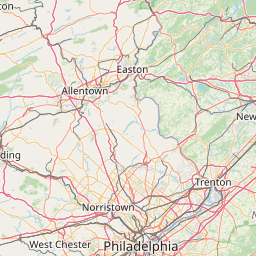Incidence of Esophageal Cancer
Summary Indicator Report Data View Options
Incidence of Esophageal Cancer by County, Males, 2017-2021






Age-adjusted Rate per 100,000 Males
- Undetermined
- 4.6 - 5.9
- 5.9+ - 8.2
- 8.2+ - 10.6
- 10.6+ - 12.4
Incidence of Esophageal Cancer by County, Female, 2017-2021






Age-adjusted Rate per 100,000 Females
- Undetermined
- 1.1 - 1.3
- 1.3+ - 1.7
- 1.7+ - 2.1
- 2.1+ - 2.7
Why Is This Important?
During 2021, 372 male and 123 female New Jersey residents were diagnosed with cancer of the esophagus. Esophageal cancer does have some modifiable risk factors. You can reduce your risk of developing this disease by avoiding tobacco and alcohol, watching your diet and body weight, and getting treated for gastroesophageal reflux disease or Barrett's esophagus.
Definition
Incidence rate of invasive esophagus cancer for a defined population in a specified time interval. Rates are age-adjusted to the 2000 U.S. Standard Population. Rates are per 100,000 population.
Data Sources
- SEER*Stat, National Center Institute
(https://www.seer.cancer.gov/seerstat) - Bridged-race population estimates, National Cancer Institute
(https://seer.cancer.gov/popdata/)
How the Measure is Calculated
| Numerator: | Number of new cases of esphageal cancer among a defined population in a specified time interval. |
| Denominator: | Defined population in a specified time interval. |
How Are We Doing?
Between 1990 and 2021, the age-adjusted esophageal cancer rate in males averaged 8.2 cases per 100,000. In females, the average rate was 2.1 cases per 100,000. The lifetime risk of developing esophageal cancer is 1 in 127 for men and 1 in 434 for women.
What Is Being Done?
A Comprehensive Cancer Control Plan was developed by the Task Force on Cancer Prevention, Early Detection and Treatment in New Jersey which aims to reduce the incidence, illness and death due to cancer among New Jersey residents. https://www.nj.gov/health/ces/public/resources/occp.shtml
Available Services
The New Jersey Department of Health (NJDOH) has many programs and partnerships related to cancer data and information, cancer resources and cancer prevention.
Cancer Epidemiology Services: https://nj.gov/health/ces/
Interactive New Jersey cancer incidence and mortality data, as well as numerous publications, are available through the NJDOH website for cancer statistics and mapping.
https://www.nj.gov/health/ces/cancer-researchers/cancer-data/index.shtml
Office of Cancer Control and Prevention: https://www.nj.gov/health/ces/public/resources/occp.shtml
NJ Cancer Education and Early Detection (NJCEED): https://www.nj.gov/health/ces/public/resources/njceed.shtml
NJ Commission on Cancer Research:
https://www.nj.gov/health/ces/cancer-researchers/njccr.shtml
 Official Site of The State of New Jersey
Official Site of The State of New Jersey
